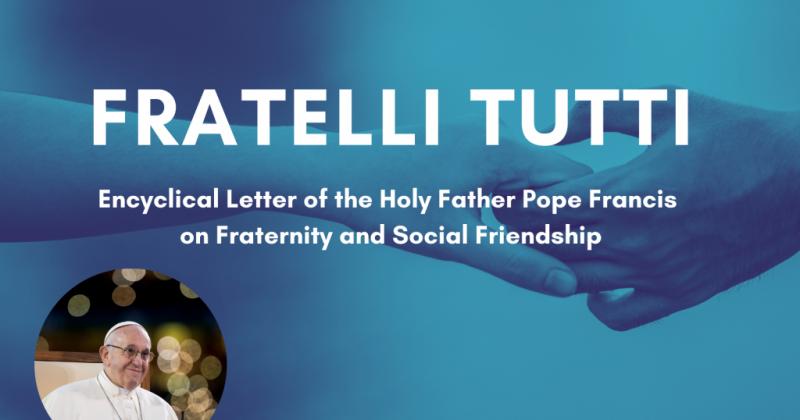Any new papal encyclical is noteworthy, and it can’t be denied that when it comes to Pope Francis’s latest, “Fratelli Tutti: On Fraternity and Social Friendship,” attention must be paid. Having read the work — as opposed to studied it — I want to offer some initial impressions over the next weeks that, I hope, will put it into a theological and historical context.
Put simply, this work is more than just a papal document — much more. In a real sense, “Fratelli Tutti” is a type of “Summa” of Pope Francis’ teachings since he was elected Bishop of Rome.
As you’ll see, this has significant implications.
To begin with, it seems to me that “Fratelli Tutti” (3 October 2020) — translated to mean “all brothers (and sisters”) — has to be read in the context of “Laudato Si’” (24 May 2015) and the “Document on Human Fraternity for World Peace and Living Together” (4 February 2019), signed by Pope Francis and Sheikh Ahmad al Tayyib, Grand Imam of Al Azhar University.
Although these are three quite different documents, they share important commonalities as well as differences. Both “Laudato Si’” and the “Document on Human Fraternity” were, in different ways, written in close cooperation with other religious leaders. Pope Francis acknowledges that “Laudato Si’” was written in close cooperation with Patriarch Bartholomew I, Greek Orthodox Patriarch of Constantinople. The patriarch even had a representative theologian work with the Holy See in the preparation and composition of the “Laudato Si’.”
The Document on Human Fraternity is also unique in that it is truly a joint document issued by the bishop of Rome and Ahmad al Tayyib, the sheikh al Azhar in Egypt. Catholics familiar with reading encyclicals will immediately recognize the “Roman style” of the document. Those familiar with reading Muslim fatāwin (singular fatwā) will immediately recognize the style of Islamic jurisprudence in that document.
The intended audience of the three documents is similar, though not identical. In “Laudato Si’,” Pope Francis wrote, “In my Apostolic Exhortation ‘Evangelii Gaudium,’ I wrote to all the members of the church. In this encyclical, I would like to enter into dialogue with all people about our common home.”
In the “Document on Human Fraternity” the opening starts with the affirmation that faith leads the believer to a particular stance vis-à-vis the other. The motivation for the document is “faith in God, who has created the universe, creatures and all human beings, [by which] believers are called to express this human fraternity.”
With “Fratelli Tutti” Francis recognized that “Although I have written it from the Christian convictions that inspire and sustain me, I have sought to make this reflection an invitation to dialogue among all people of good will". Thus, there is a slight difference of audience in each document. “Laudato Si’” is addressed to all who inhabit the planet. The “Document on Human Fraternity” is addressed to those motivated by faith in the (one) creator God. “Fratelli Tutti,” lastly, is a document motivated by Christian values and addressed primarily to Christians — but inviting all people of good will to engage in the dialogue.
In something which is unique to Pope Francis, each of these documents stands openly in relation to and dialogue with other people. In “Laudato Si’” the dialogue partner, mentioned by name, is Patriarch Bartholomew of Constantinople. In the “Document on Human Fraternity,” the dialogue partner is Sheikh Ahmad al Tayyib and the Muslim Community. At the end of “Fratelli Tutti” the pope acknowledges his debt not only to Francis of Assisi but also to Martin Luther King, Desmond Tutu, Mahatma Gandhi, Charles de Foucauld “and many more.” To the best of my knowledge nothing like that has ever been done before in an encyclical.
In the days ahead, I will more closely at some of the themes which Pope Francis develops in “Fratelli Tutti.” Some of these themes are foreshadowed in “Laudato Si’” and the “Document on Human Fraternity” others are not but are clearly things which the pope sees as related. Lastly, I will attempt to look at the significance of “Fratelli Tutti” in the context of the teachings of Pope Francis and its significance to the ongoing development of the social magisterium of the church.
Make no mistake: this encyclical is a landmark. I suspect it is one the world will be reading, studying and referencing for a long time to come.
